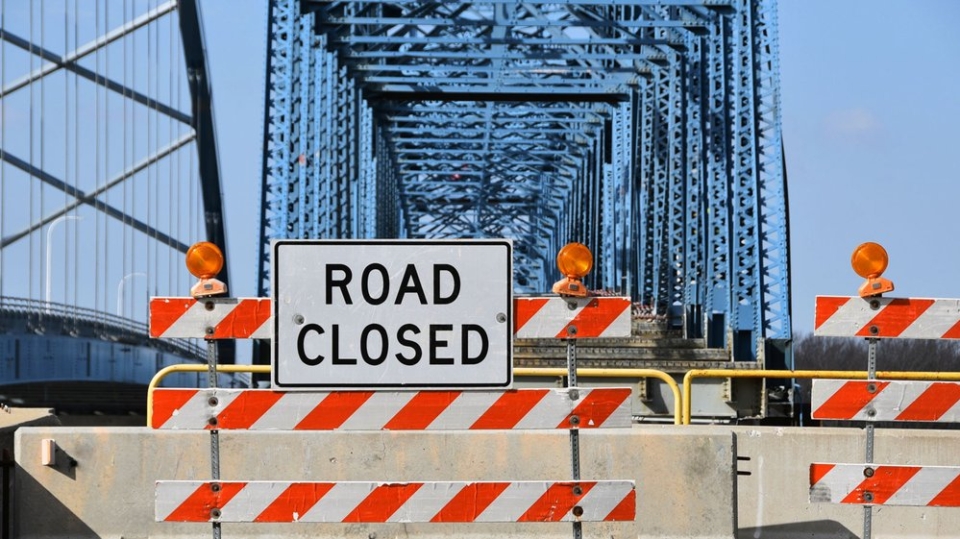Story by
Meshach Weber
Tags /
- Business
- Cargo
- Freight

Just moments ago, President Joe Biden signed the bipartisan $1.2 trillion Infrastructure Investment and Jobs Act into law, marking a historic investment in the modernization of U.S. infrastructure—and the freight industry comes out a big winner.
So, what can you expect to see—and what opportunities does this investment create for freight industry businesses, just like yours?
Repairing roads and bridges
Right now, 20% of U.S. highway and major road miles are classified in poor condition—and 45,000 bridges are structurally deficient according to federal data. (Of course, a not-so-quick jaunt on I-294 outside of Chicago would tell even the most uneducated driver that.)
This failure to maintain infrastructure is creating safety hazards; increasing vehicle wear and tear, fuel consumption, and carbon emissions; reducing productivity, and impacting driver wellness. So, it’s hardly a surprise that infrastructure once again landed in ATRI’s Critical Issues in the Trucking Industry report, released in October.
Just consider the I-40 Hernando de Soto Bridge, northwest of downtown Memphis, TN. When a crack was discovered in a steel support beam this spring, the bridge was closed for repairs—spiking average transit times from eight minutes to 84 minutes. ATRI estimated the closure cost the industry $2.4 million a day.
The infrastructure bill will directly address these challenges. Reauthorizing existing infrastructure programs for five years and delivering $110 billion in new road and bridge repair investment—a 38% increase in road and bridge funding—these projects are expected to increase safety, reduce congestion, and enable more efficient, sustainable movement of freight across the country.
Modernizing ports and airports
Lacking the modern infrastructure necessary to respond to supply chain disruption and shifting consumer spending habits, our nation’s ports are groaning beneath the weight of a cargo ship surge. Likewise, U.S. airports have been chronically underfunded, according to the Airports Council International-North America, which notes “more than $115 billion in documented infrastructure needs over the next five years because they have struggled to make necessary improvements to terminals, runways and other critical infrastructure.”
Investing $17 billion in port infrastructure and $25 billion in airports, the bill will modernize infrastructure, including:
- Standardizing data-sharing requirements
- Deepening harbors to accommodate today’s mega containerships
- Upgrading obsolete inspection facilities at our nation’s borders
Ultimately, these investments will help eliminate bottlenecks and accelerate commerce, creating a more resilient supply chain.
What’s more, a new Office of Multimodal Freight Infrastructure and Policy will deliver assistance to federal, state, and local governments as they seek to drive additional supply chain efficiency through smart freight policy.
The construction boom is coming and, with it, opportunities and challenges
This massive investment, which economists expect will have a multiplier effect, will not only deliver improvements to critical freight industry infrastructure, but clean drinking water, broadband, public transit, EV charging station, and power construction projects from coast-to-coast.
Meaning, it’s boom time for the construction industry.
As construction companies win bids for projects, they’ll need to establish trusted freight broker and carrier partnerships to move their materials and high-value heavy machinery from Point A to Point B—at a time when capacity is already tight. Adding complexity to that challenge, some inexperienced brokers and carriers will be chasing opportunity in this market—without having done their due diligence.
Assessing broker and carrier capabilities will be critical to ensuring the timely completion of projects and safe delivery of materials and construction equipment. Shippers will find that even simply asking for a quote over the phone can be tremendously revealing, as experienced professionals can line-item ballpark figures for permits and pilot cars, for example.
Likewise, experienced heavy equipment freight brokers and dry van and flatbed carriers will be in an enviable position, as they pick and choose their loads with the capacity ratio tilted heavily in their favor. New but safety-conscious brokers and carriers who invest the time to truly understand the complexity involved in transporting heavy loads will also find opportunities for growth.
The challenge carriers and asset-based freight brokerages face: Recruiting and retaining safe drivers—a limiting factor for many, as the CDL population ages and drivers look for work that enables them to spend more time at home.
Acknowledging this challenge, the infrastructure bill does include funding to help attract new drivers to the industry, including a pilot program that will enable drivers between the ages 18 and 20 to drive interstate after undergoing a robust training program. The success of this program remains to be seen, of course, but it represents a step in the right direction.
All told, we see tremendous potential for the infrastructure bill to create good jobs within the freight industry and accelerate commerce—and we’re looking forward to the road ahead.